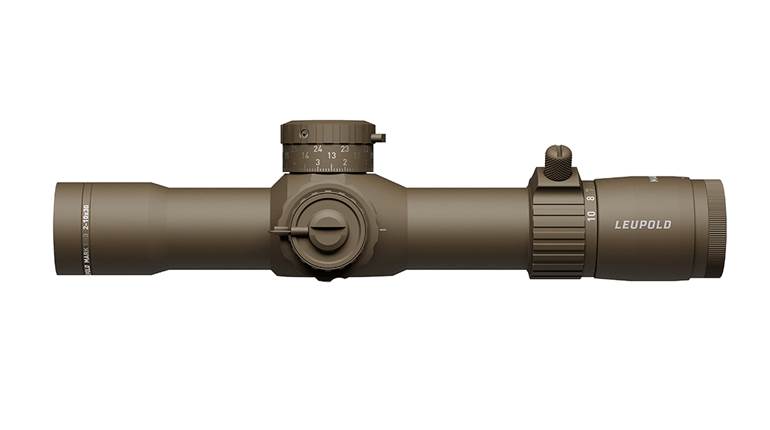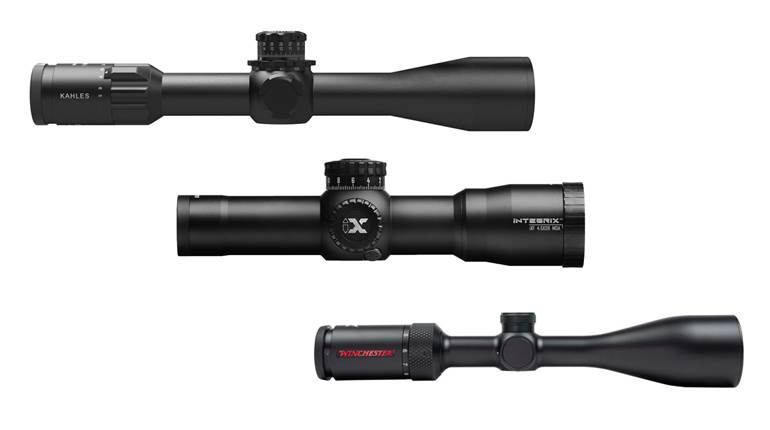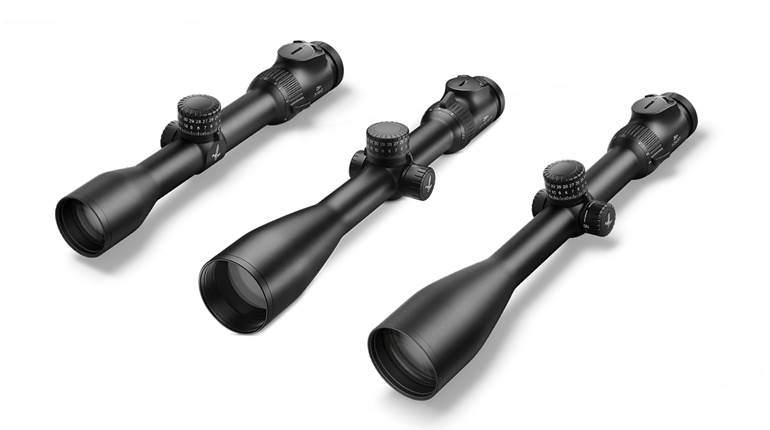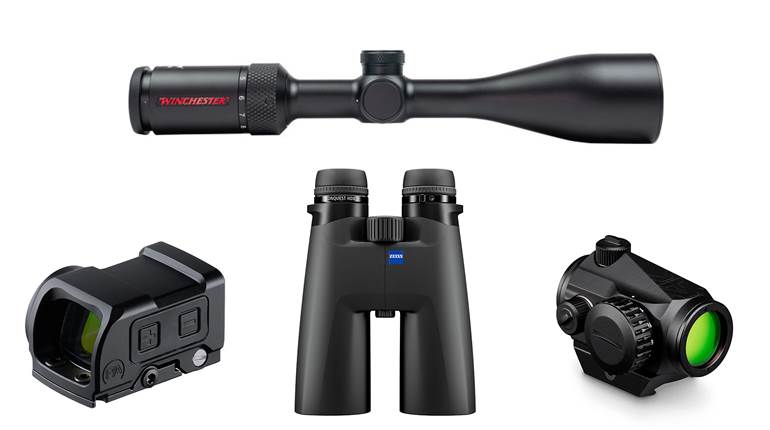
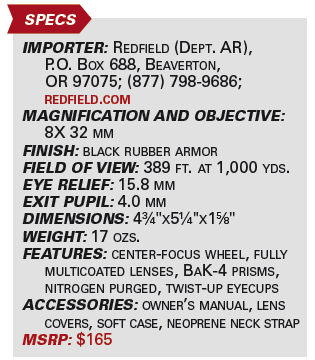 The aluminum-chassis Rebel weighs only 17 ozs. and measures 4¾" in length (with twist-up eyecups extended) and 5¼" wide (fully opened)—a benefit of the in-line roof-prism design. According to Redfield, it uses “premium” BaK-4 prisms and fully multi-coated lenses—i.e. all air-to-glass surfaces have numerous layers of antireflection coatings for maximum brightness, resolution and edge-to-edge clarity.
The aluminum-chassis Rebel weighs only 17 ozs. and measures 4¾" in length (with twist-up eyecups extended) and 5¼" wide (fully opened)—a benefit of the in-line roof-prism design. According to Redfield, it uses “premium” BaK-4 prisms and fully multi-coated lenses—i.e. all air-to-glass surfaces have numerous layers of antireflection coatings for maximum brightness, resolution and edge-to-edge clarity. Focusing is by way of a central wheel that features rows of raised, dimpled ridges to increase purchase when making adjustments. Both it and the diopter adjustment wheel—located on the right barrel, immediately forward of the twist-up eyecup—offer enough resistance that they are unlikely to be unintentionally moved during normal use.
The sample 8X 32 mm Rebel was evaluated and rated for optical quality, mechanics/craftsmanship and durability. Concerning the former, in a range of natural and artificial lighting, edge-to-edge clarity, contrast, resolution, and color fidelity were judged to be quite good, as was brightness. As for mechanics, no misalignment of the barrels was noted.
 Perhaps our only complaint was found in the twist-up eyecups; despite having defined audible and tactile “stops,” the eyecups could move back and forth 1/16" or more, which could prevent the unit from being square with the face. Also, the right eyecup was noticeably looser than that on the left barrel. We subjected the Rebel to drop testing from a height of 4 ft., from which it emerged unscathed, and we froze it overnight and then submerged it in hot water. Outside of the normal external fogging and minute internal fogging (nitrogen purging cannot remove all of the air, and it cleared very rapidly), it was found to be both waterproof and fog-proof.
Perhaps our only complaint was found in the twist-up eyecups; despite having defined audible and tactile “stops,” the eyecups could move back and forth 1/16" or more, which could prevent the unit from being square with the face. Also, the right eyecup was noticeably looser than that on the left barrel. We subjected the Rebel to drop testing from a height of 4 ft., from which it emerged unscathed, and we froze it overnight and then submerged it in hot water. Outside of the normal external fogging and minute internal fogging (nitrogen purging cannot remove all of the air, and it cleared very rapidly), it was found to be both waterproof and fog-proof.Based upon our testing, the compact and lightweight Rebel 8X 32 mm binocular—despite its being an imported optic meant for the cost-conscious consumer—appears capable of faithful service for many seasons afield, whether chasing whitetails in “big woods” or antelope on the prairies.












